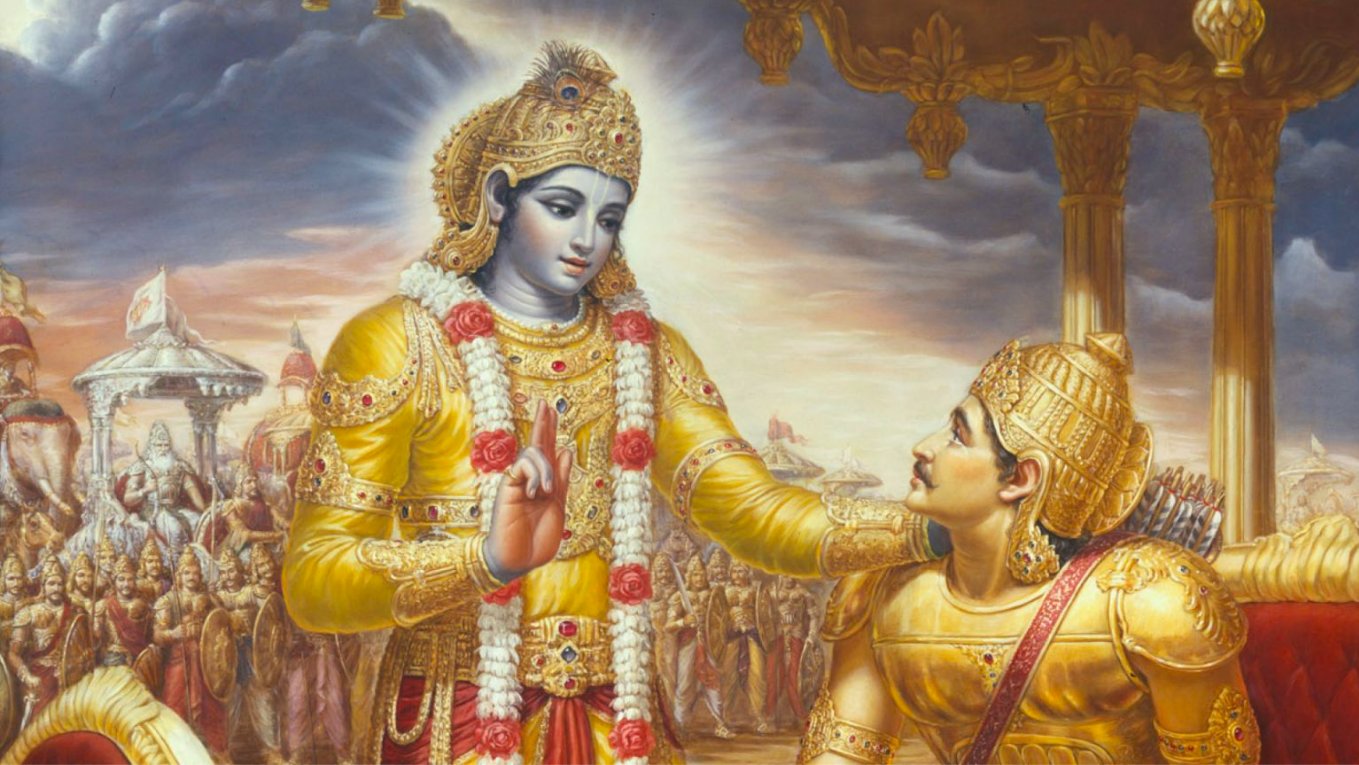The Book in Three Sentences
- The Bhagavad Gita is a sacred Hindu scripture that provides profound teachings on duty, spirituality, and the path to self-realization.
- It presents a conversation between Prince Arjuna and Lord Krishna, where Krishna imparts wisdom on fulfilling one’s duty without attachment to the outcomes, practicing self-discipline, and realizing the eternal nature of the soul.
- The Gita offers guidance on leading a balanced and purposeful life, emphasizing the importance of righteousness, devotion, and self-realization in achieving inner peace and spiritual growth.
The Bhagavad Gita Summary
-
Setting the Stage: The story takes place on the battlefield of Kurukshetra, just before the great Kurukshetra War. Arjuna, a skilled warrior, becomes overwhelmed with moral and emotional confusion as he faces the prospect of fighting against his own relatives and revered teachers.
-
Dharma and Duty: Lord Krishna imparts profound philosophical teachings to Arjuna, emphasizing the importance of fulfilling one’s duty or dharma. Krishna explains that every individual has a unique role to play in society and that one should perform their duties selflessly, without attachment to the outcome.
-
Paths to Liberation: The Bhagavad Gita explores different paths to attain liberation or self-realization. It discusses three main paths: Karma Yoga (the path of selfless action), Bhakti Yoga (the path of devotion and love for the divine), and Jnana Yoga (the path of knowledge and self-inquiry). Krishna highlights that all paths ultimately lead to the same goal of attaining union with the divine.
-
Understanding the Self: The Gita delves into the nature of the self and its relationship to the body, mind, and soul. Krishna explains the eternal and indestructible nature of the soul (Atman) and the transient nature of the physical body. He encourages Arjuna to identify with the soul rather than the temporary aspects of existence.
-
Control of the Mind and Senses: Krishna emphasizes the importance of controlling the mind and senses, as they can be sources of distraction and delusion. He teaches techniques to discipline the mind, such as meditation and detachment from desires, to achieve spiritual progress.
-
Renunciation and Detachment: The Bhagavad Gita explores the concept of renunciation and detachment, emphasizing that one can be actively engaged in the world while maintaining inner detachment. Krishna explains that true detachment is not avoiding responsibilities but rather performing actions without seeking personal gain or attachment.
-
The Supreme Reality: Krishna reveals his divine nature to Arjuna and explains that he is the ultimate reality, the source of all creation, and the essence that pervades everything. He invites Arjuna to surrender to him and find refuge in his divine presence.
